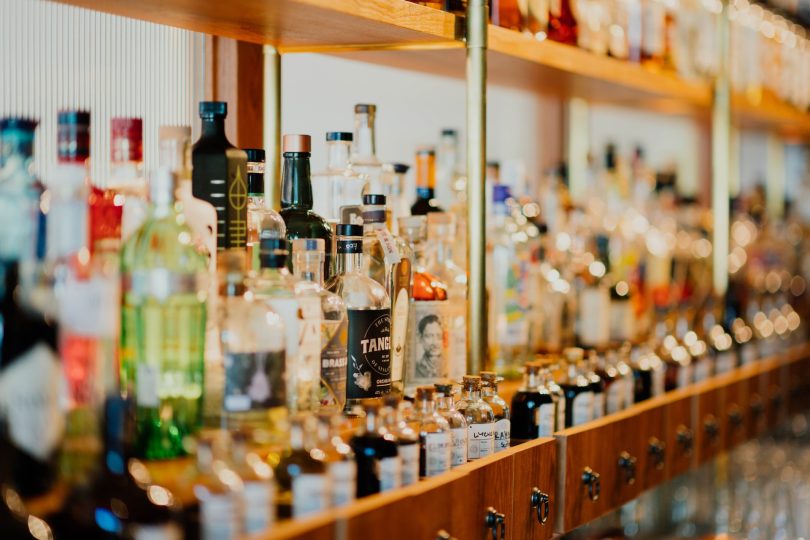According to the American Institute for Cancer Research, for those interested in cancer prevention (and let’s face it who isn’t?), it’s best to not drink alcohol. Alcohol consumption is directly linked to the development of at least seven cancers and has been shown to significantly increase your risk of developing several others. One such cancer is breast cancer. Risk for developmental of breast cancer, especially in post-menopausal women, significantly increases with increased consumption of alcohol. So much so that women at high risk for breast cancer are advised to not drink alcohol.
In today’s society, alcohol is often a key player at social events, mealtimes, and celebrations. It pairs well with food, “takes the edge off” to make you feel more relaxed, and many people genuinely love the taste. But in addition to increasing cancer risk, alcohol has many other not-so-optimal effects on the body. These include increasing feelings of stress and anxiety, high blood pressure, digestive problems, and an increased risk of heart disease, stroke, and liver disease.
History has shown us that it’s unrealistic for every individual to cut out alcohol completely. With that being said, the saying “moderation is key” is a motto everyone should keep in mind while drinking. Alcohol is actually considered its own macronutrient, with seven calories per gram. To put that in perspective, carbohydrates and protein each have four calories per gram and fat has nine calories per gram. So, alcohol is pretty calorically-dense. With little nutritional value, watching how much you drink is essential.
The National Institute on Alcohol Abuse and Alcoholism defines heavy drinking as consuming more than 14 drinks per week for men and consuming more than seven drinks per week for women. This information coincides with the 2020-2025 Dietary Guidelines for Americans, which suggest limiting alcohol intake to one drink per day for women and no more than two drinks per day for men- and only for adults of legal drinking age.
So, what exactly is ONE drink? The serving size depends on the type of alcoholic beverage. The following all have the SAME amount of alcohol and count as one serving:
- 12 ounces of beer
- 5 ounces of wine
- 1.5 ounces of hard liquor or distilled spirits
It should be noted that alcohol can interfere with certain medical treatments, medications, can be passed thru breast milk and is not advised during pregnancy. You should always discuss with your doctor if alcohol is safe for you.
Now that you understand what exactly counts as a serving of alcohol and that more is not necessarily better, here’s a few tips to assist with keeping your portion sizes in check when drinking.
- Water, Water, Water! While you should make sure you’re well hydrated prior to consuming alcohol, it’s also beneficial to alternate between water and alcohol when you’re drinking. This can prevent dehydration and help you to not over-indulge in alcoholic beverages. If you’re a wine drinker, create a spritzer by mixing carbonated water (without added sugar) to your glass. Same goes for liquor—try opting for a vodka water or tequila soda, this will save you some calories you would normally consume in a typical mix drink and provide a little extra hydration!
- Don’t forget to Eat – to assist with slowing down the rate at which alcohol is absorbed into the bloodstream (minimizing alcohol’s intoxicating effects) plan to eat before or preferable with your drink. Meals/snacks should contain protein and fat- and some carbohydrates (but not too many as your drink likely contains plenty). Examples include apples with peanut butter, cheese, nuts, or a salad with chicken and avocado.
- Plan Ahead – Decide ahead of time how many drinks you will have and when. And more importantly, fill someone else in on your plan to hold you accountable. Maybe you decide to have a glass of wine at cocktail hour, or you wait until supper to have a cocktail. Having a plan will allow you to pace yourself while still enjoying your beverage of choice!
- Choose low sugar or low carb beverages and cocktails – Aim for choices such as dry white wine or champagne, red wine, tequila or vodka. Apple ciders that are ‘dry’ and contain less than 10g of sugar per 12 fl. oz. serving can also be a good choice. On the other hand, stay clear of drinks loaded with sugars such as wine coolers, spiked lemonades and bottled margaritas. Sugary mixers and shots are also to be avoided. These added sugars will not only contribute to your calorie total for the day, but they can also contribute to the hangover you may feel the following morning.
- If you are prone to having a nightly glass of wine and want to cut back: There are several wine and beer products on the market these days that have significantly lower contents of sugar and alcohol than the traditional options—and some have neither of both! Additionally, you could look up recipes for mocktails if you’re the mixologist-type. Links for these options are listed below.
So, there you have it, top tips to drinking smarter – not harder. Cheers!
Low Calorie or Alcohol-Free Beers:
Low sugar, Reduced-Alchol Wines:
- Mind and Body Wines
- Sunny Wines
- Fre Wines (alcohol free)
Mocktail Recipes:


